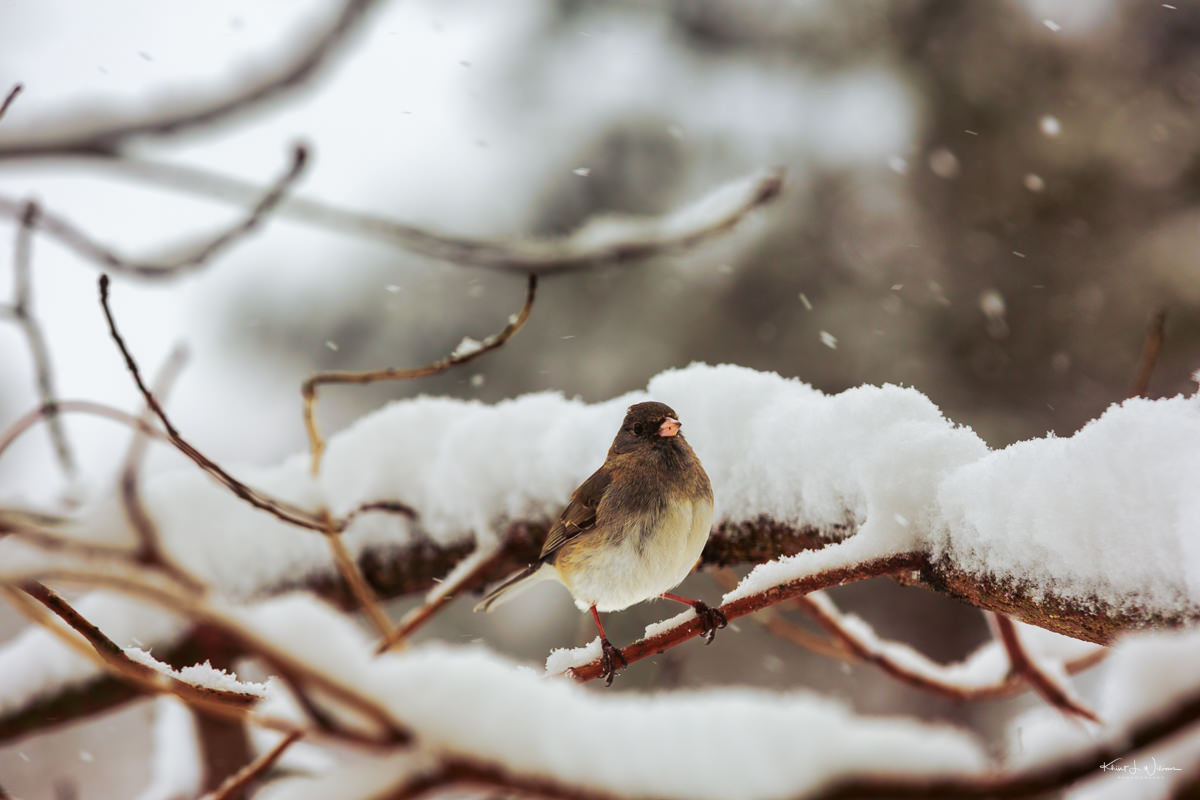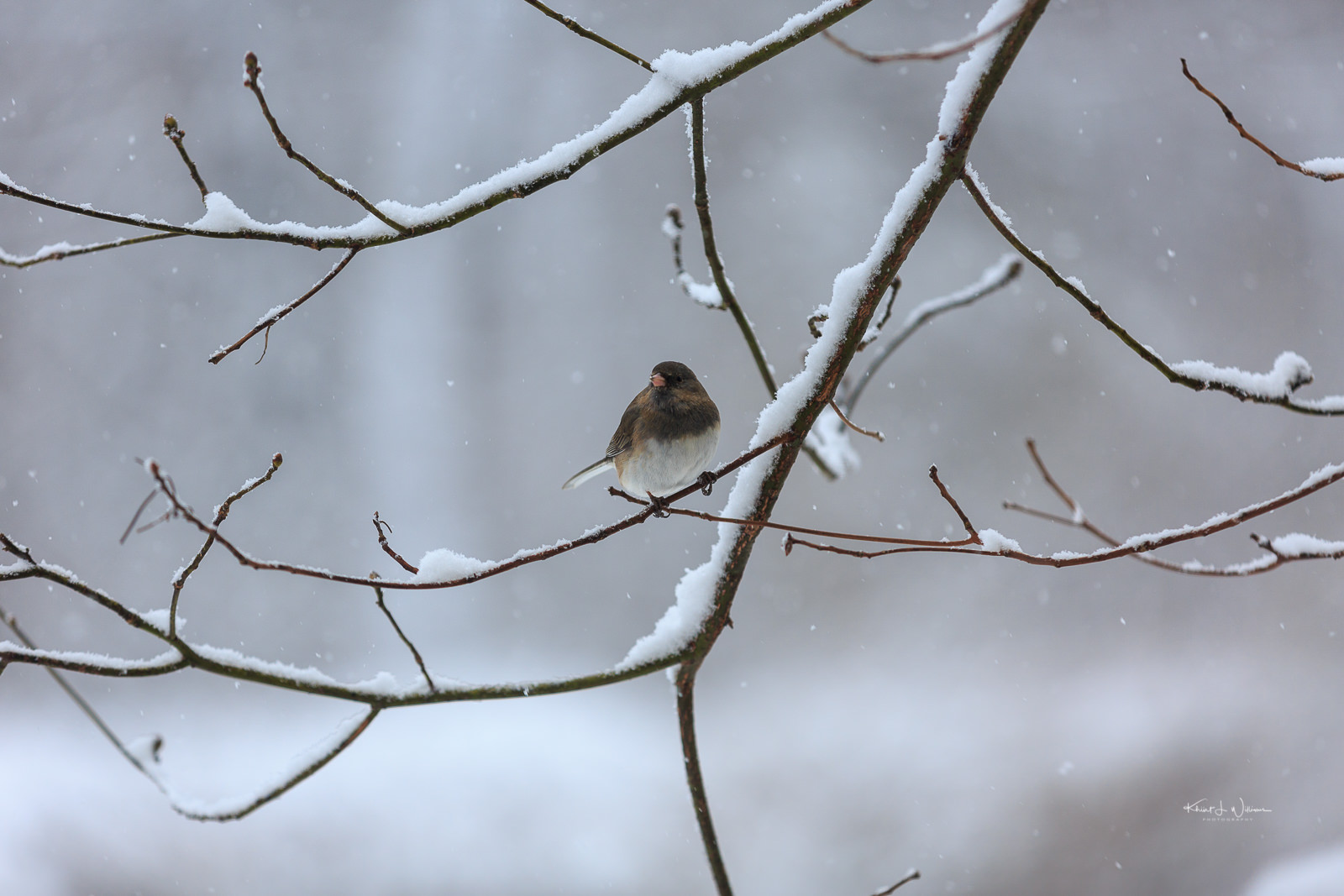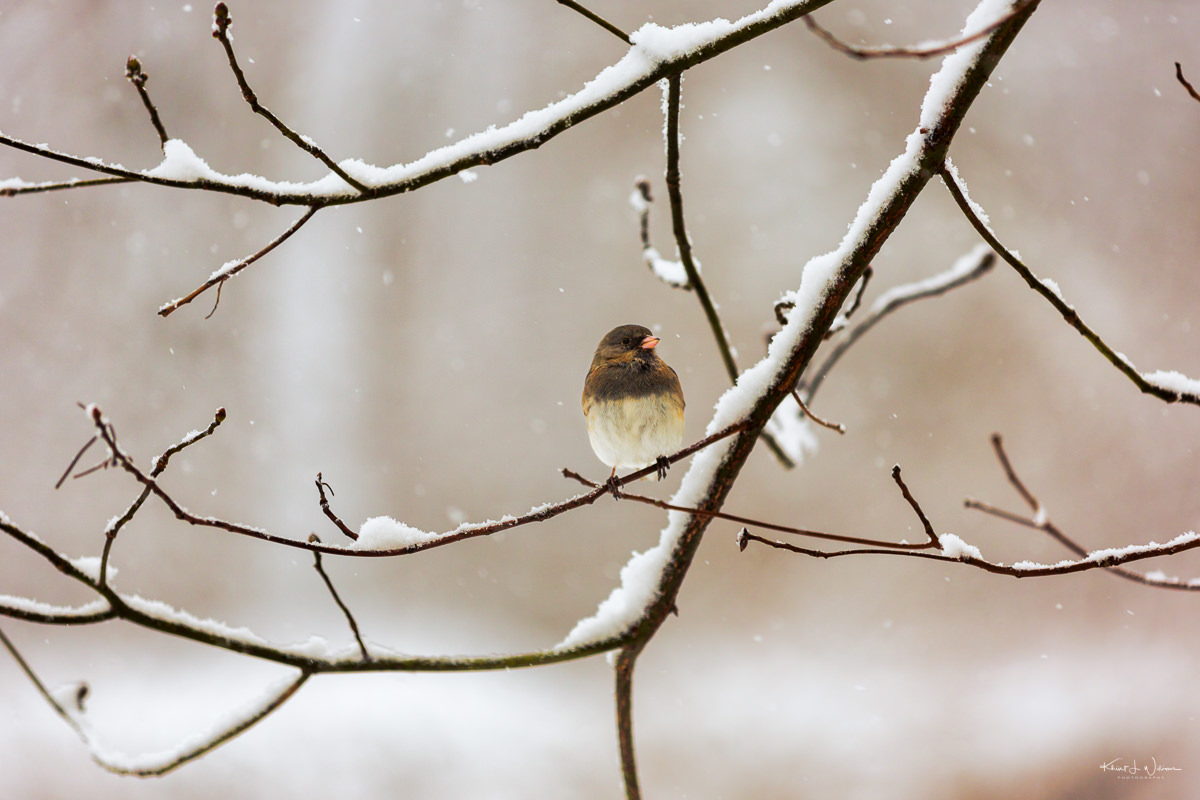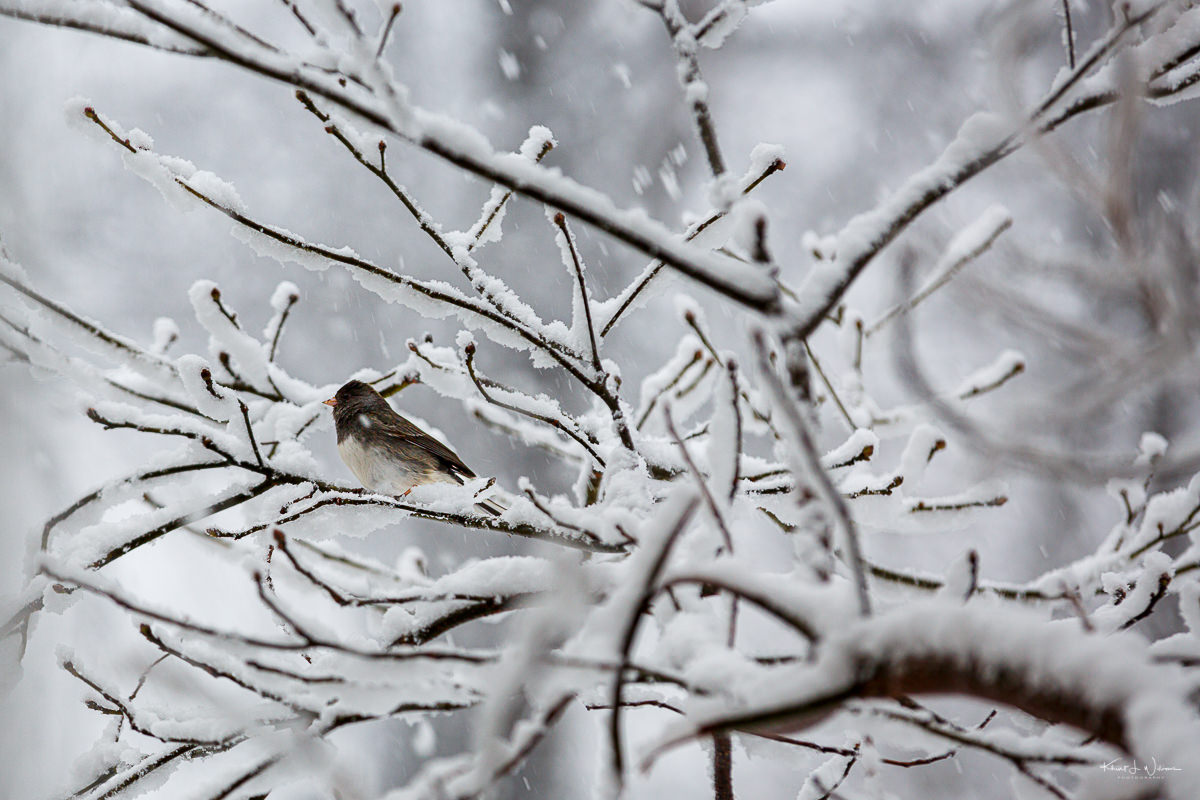Guess what? 1/1000s is also a good shutter speed for photos of backyard birds in the snow. But I have no clue what sort of bird this is. Do you?
Tag: Dark-eyed Junco
Gray on White
More bird photos because that is the only thing I can photograph from my kitchen window because I'm at home, sick with a cold.
Outside the kitchen window in the barren branches of the sassafras tree, I saw a dark, Dark-eyed Junco (Junco hyemalis), a small, greyish American sparrow known for its striking appearance and adaptability. As the chill of the house filled my bones, I felt a bit of pity for the bird. But as I read up on the Dark-eyed Junco, I realised that I needn't have worried.
Commonly referred to as "snowbirds," Dark-eyed Junco are perhaps best known for their sudden arrival in backyards across North America, foreshadowing the onset of winter. With a slate-grey head and back contrasting against a white belly, the males are slightly more colourful than the females.

Juncos are ground feeders, often spotted hopping on the earth or snow, foraging for seeds, insects, and berries. They have a short, stout beak adapted to their granivorous diet but will also eat insects during the breeding season.
Their habitat is versatile, ranging from forests to suburban areas. During the breeding season, they prefer coniferous or mixed forests in northern and mountainous regions, migrating to lower elevations and more southerly latitudes in winter.
Social birds, Juncos, often feed in flocks and are a common sight at feeders1.
Dark-eyed Juncos have several regional variations or subspecies, differing mainly in colour and distribution. Despite habitat changes and climate challenges, they remain one of North America's most abundant forest birds, with a conservation status of "Least Concern."
- I have a small suet feeder hanging from a tree branch. ↩
Dark-eyed Junco in the Snow
Recently I have felt that all my work is effluent. Shit! Crap!
I snapped these pictures during a snowstorm in early February. The birds were flocking to the bird feeder in my backyard. I used a Canon EOS 5D Mark III camera and an EF70-200mm f/2.8L IS II USM super zoom lens to take the shots. I took the photos from inside my house, through the kitchen window and the sliding door in the living room.
Dark-eyed Junco
When I photographed this bird, I had no idea what it was. After a few hours of searching online and looking at many bird photographs, I identified this bird as the Dark-eyed Junco.
The Dark-eyed Junco (Junco hyemalis) is a small-sized songbird that belongs to the sparrow family, Passerellidae. It is primarily found in North America and is known for its distinctive plumage variations across different geographic regions.
Dark-eyed Juncos are known for their dark-coloured eyes, surrounded by contrasting white or grey eyerings. Their plumage exhibits considerable variation, but the most common forms include a slate-coloured body with a white belly. Some populations may have a reddish-brown back or a mix of brown and grey tones.
These juncos are migratory birds found in many habitats, including forests, woodlands, and even suburban areas. During the breeding season, they inhabit the northern parts of North America, while in winter, they migrate to the southern regions, including parts of the United States and Mexico.
Dark-eyed Juncos are primarily ground foragers and feed on a diverse diet, including seeds, insects, and occasionally fruits and berries. They can often be seen hopping on the ground, using a characteristic "double-scratch" behaviour to uncover food beneath the leaf litter.



